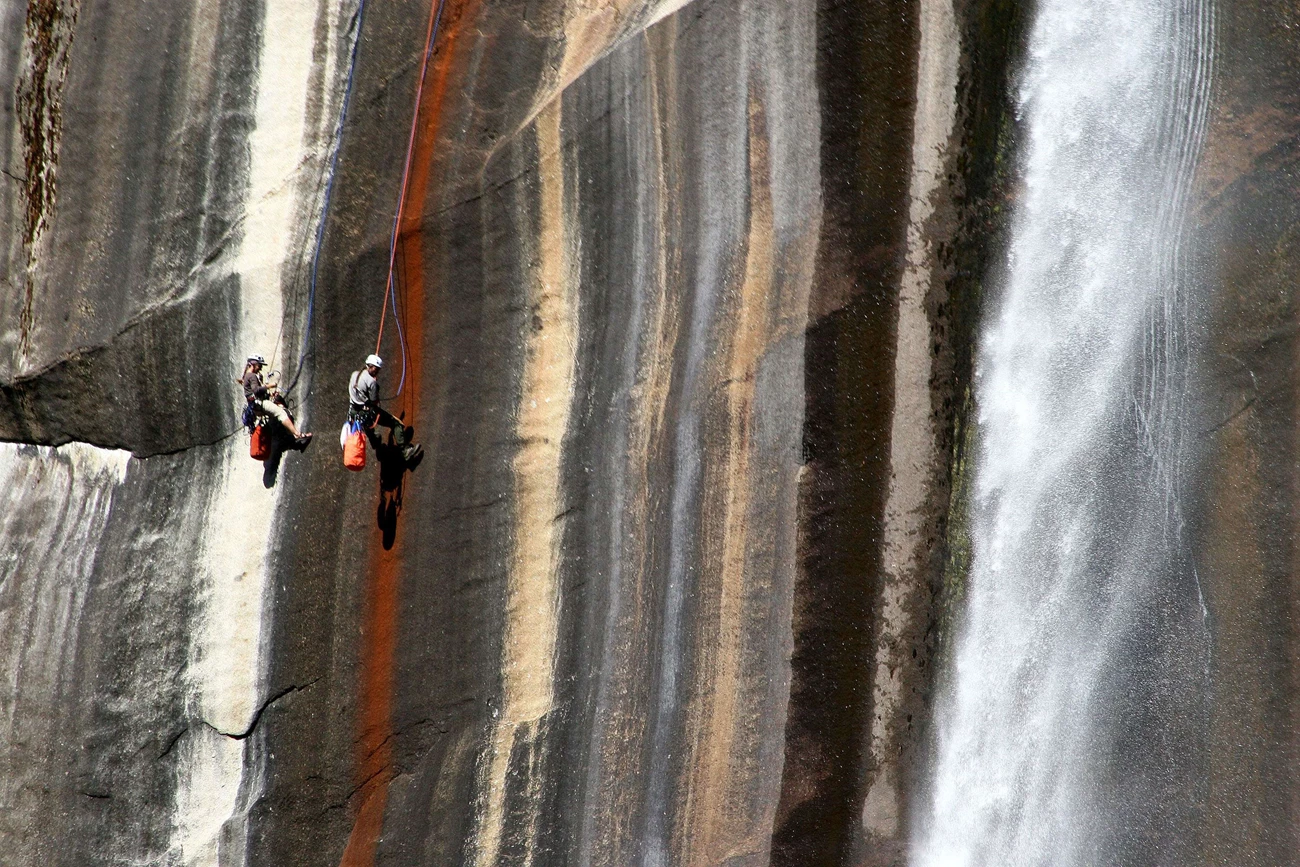
Hundreds of different lichen species adorn the Sierra Nevada. They can be found in almost any habitat, from trees and shrubs at the lowest elevation, to the exposed rock over 13,000 feet high at the summit of Mt. Lyell, Yosemite National Park’s highest peak. Lichens significantly contribute to Yosemite’s visual character by streaking colorful patterns on prominent cliff faces. Seasonally wet cliff faces, such as those near Bridalveil Falls in Yosemite Valley, become coated entirely jet black by moisture-loving crustose lichens. 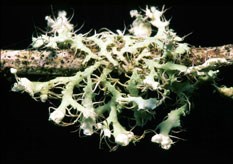
Lichens are fungi that live in intimate association with alga and/or species of cyanobacteria (a kind of bacteria that photosynthesizes). While these algal or cyanobacterial partners may sometimes be found free-living, the fungus cannot live without its partners. Yosemite worked to document its lichen flora—never comprehensively surveyed. An ongoing “Yosemite Unknown Flora” survey focused on micro-habitats containing high biodiversity of lichens. Probably more than 500 lichens species exist in the park, but prior to this project, fewer than 100 were known. 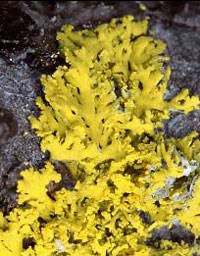
Why are we interested in lichens in the park?The diversity and distribution of lichens tell a great deal about air quality and the level of certain types of pollution, especially nitrogen, in the park. Lichens are intimately connected to their environment. They lack roots and rely upon the atmosphere for their water and nutrients. Because they do not have an outer epidermal layer, they cannot discriminate between nutrients and pollutants, and, as a result, both pollutants and nutrients are absorbed. When pollutants accumulate above certain levels, lichen growth and health are impaired. Air quality readily influences the composition of lichen communities because individual species differ in their tolerance levels. Due to little seasonal variation in lichen communities, monitoring lichen community composition has become one of the best biological measures of nitrogen and sulfur-based pollution in forests. 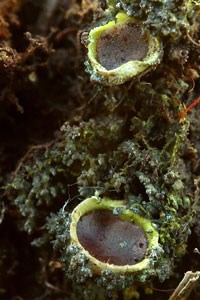
What is being done to study lichens in the park?Many phases of collection and identification took place In the Yosemite Unknown Flora study. Beginning in 2007, experienced mountaineers from the American Alpine Club assisted with lichen collecting on steep cliffs. In 2008, an experienced lichenologist from Denali National Park was brought in and a cooperative agreement with Oregon State University was established. In September 2009 as part of Yosemite’s first “Lichen Blitz,” 10 leading lichen taxonomists from Austria, Germany, Sweden, and across the United States helped NPS botanists document lichens in a wide range of interesting habits. This international team was selected specifically for their expertise to identify taxonomically difficult lichen groups that are well represented but not yet documented within the park. Many species have been added to the park lichen inventory—several new to the Sierra Nevada or new to California. What are some of the specific inventorying results? Lichen communities in Yosemite are diverse, but several pollution-intolerant species, such as Alectoria sarmentosa, Bryoria fremontii, and Usnea spp. are uncommon and may be in decline. Nitrogen-loving species such as Candelaria concolor, Physcia, Physconia and Xanthoria spp. appear to be increasing in abundance, particularly along the Merced River corridor. 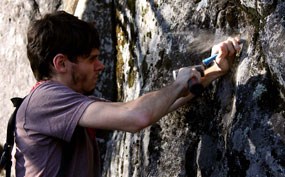
Special efforts were made to catalog lichens restricted to calcareous substrates. Several rare taxa new to the park were recorded, including Solorina spongiosa. This lichen was previously known from only a single site in California. The “Yosemite Unknown Flora” project was funded in 2007 by Yosemite Conservancy and the Centennial Challenge Initiative (All Taxa Biotic Inventory) in 2008. To Learn More
|
Last updated: May 5, 2022
